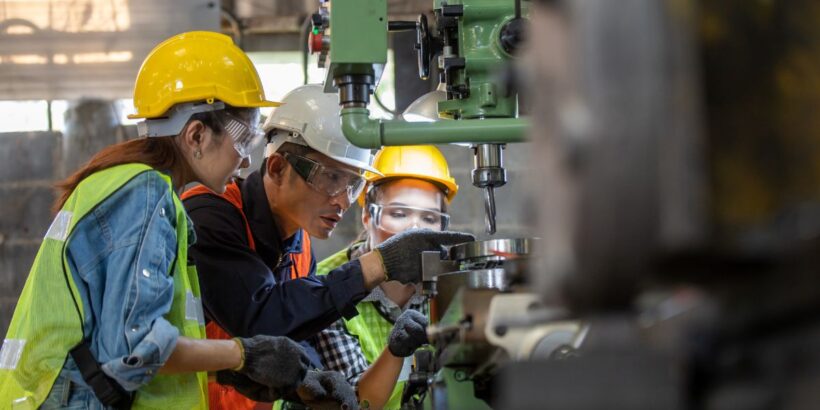Industrial worksites are fraught with potential dangers, including heavy machinery accidents, exposure to hazardous substances, and the risk of structural failures, all of which pose significant threats to worker safety. The complexity and scale of operations often make it challenging to monitor every potential hazard manually. However, technology provides innovative tools for enhanced monitoring, hazard identification, and worker training. Explore how technology improves industrial worksite safety and how companies are changing their approaches to protecting their workforces.
Enhanced Monitoring and Surveillance
The integration of advanced technology in monitoring and surveillance systems at industrial worksites has revolutionized the way safety and operational efficiency are managed. For instance, drones equipped with high-resolution cameras and sensors can conduct aerial inspections of vast and hard-to-reach areas, providing real-time data on structural integrity, equipment conditions, and potential safety hazards.
Additionally, wearable technology, such as smart helmets and vests with built-in sensors, can monitor workers’ vital signs and environmental conditions. These devices can alert workers to potential dangers like toxic gas exposure or extreme temperatures, thereby preventing health-related incidents.
Virtual Training Methods
Organizations can now train employees in risk-free environments using virtual reality (VR) and augmented reality (AR) simulations. VR creates a completely digital environment that users can interact with using special headsets and controllers, effectively placing them inside a virtual world. AR, on the other hand, overlays digital information onto the real world, enhancing the user’s perception of their surroundings with computer-generated sensory input such as sound, video, or graphics.
These technologies offer organizations innovative ways to conduct training by creating realistic simulations of workplace tasks and potential hazards without the physical risks associated with traditional training. Moreover, businesses can customize VR and AR training to fit specific industry needs or job roles, making it an adaptable and effective tool for workforce development.
Simulation-Based Training in Hazmat Storage
Simulation-based training for hazmat storage is one of the most exciting uses for VR and AR technology in industrial worksites. For instance, simulation-based training can train workers to respond to chemical spills, exploring the correct procedures for containment and cleanup without the risk of exposure to harmful substances. Similarly, trainees can practice emergency evacuation protocols in the event of a fire or gas leak. These applications make VR and AR training an emerging trend to explore in hazmat storage.
Predictive Analytics for Hazard Identification
Predictive analytic technology, powered by AI and machine learning algorithms, can significantly enhance safety measures in industrial worksites by identifying potential hazards. By analyzing vast amounts of data from various sources, such as equipment sensors and operational logs, these algorithms can detect patterns and anomalies that human operators might overlook. This approach helps workers anticipate equipment failures, structural weaknesses, or unsafe working conditions, enabling timely interventions.
Predictive analytics can dramatically reduce the likelihood of workplace accidents, safeguarding the health and safety of employees. Moreover, the continuous learning capability of AI means that the system’s ability to identify threats improves over time, adapting to new hazards and further enhancing workplace safety.
Through enhanced monitoring and surveillance with drones and wearable devices, virtual and simulation-based training methods, and the predictive power of AI-driven analytics, companies are now better equipped than ever to identify and mitigate potential hazards. These technological advancements not only improve safety outcomes but also foster a proactive culture of safety and preparedness.

